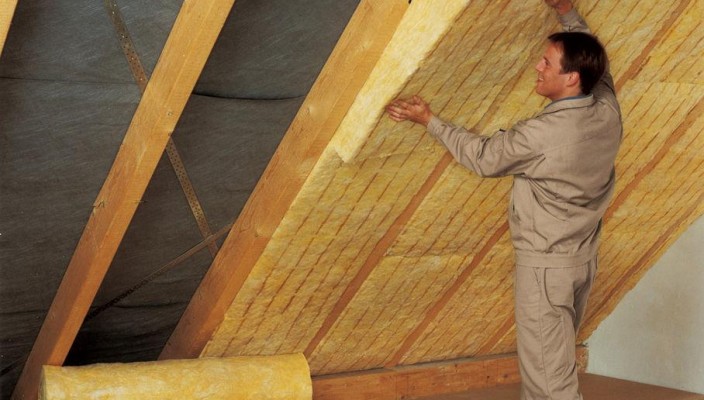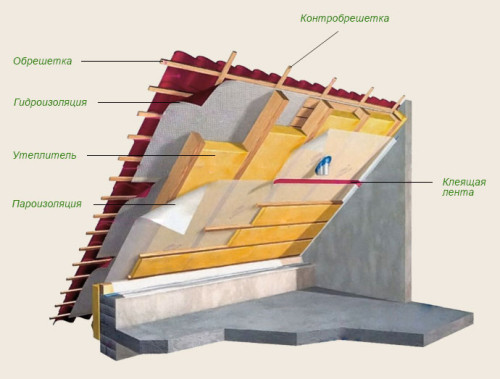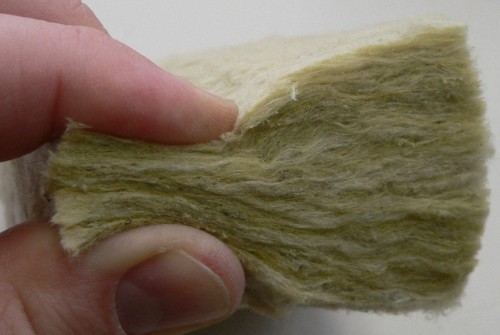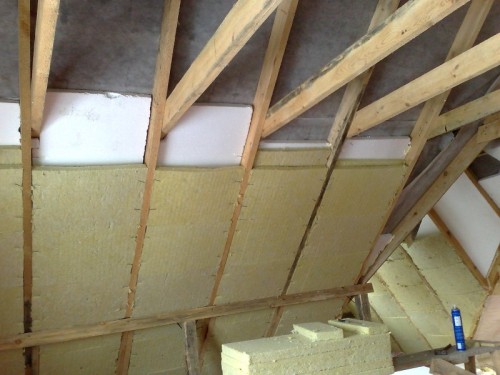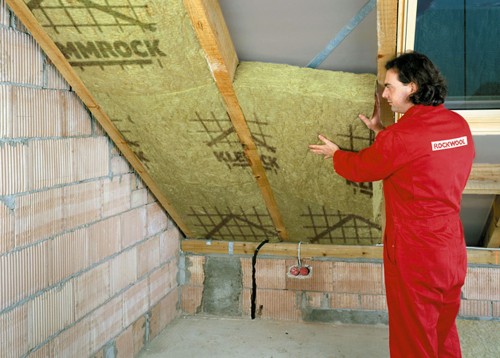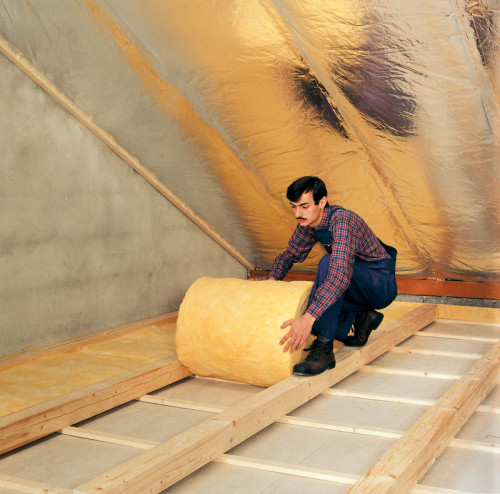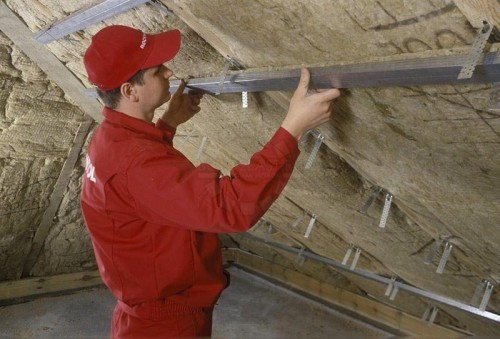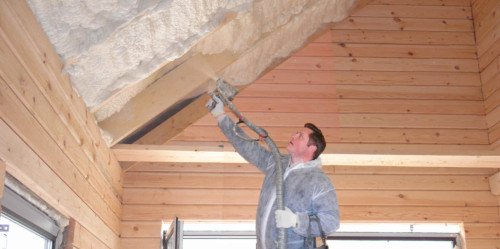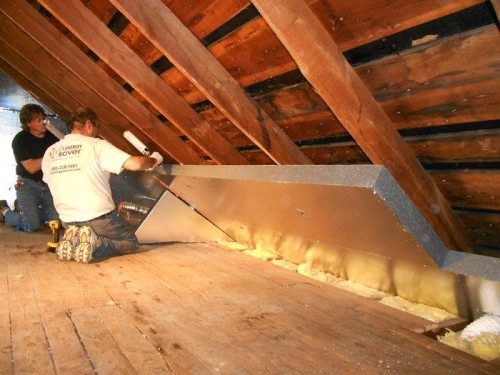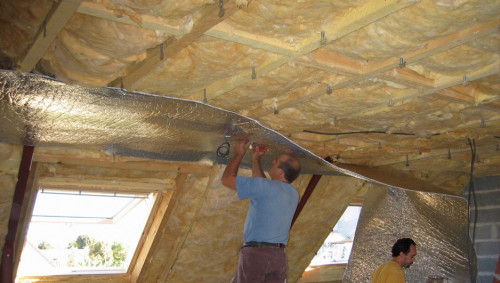Many people often use attic as an additional living space, and to live in such a room it is cozy, it is necessary to take care of its quality insulation. Fortunately, it is possible to carry out this work personally, knowing the technology of the process and choosing the correct material correctly. In this article we will tell you about the insulation of the attic from the inside with their own hands.
Content
The subtleties of the insulation process of the attic floor
The attic room in its characteristics is somewhat different from the main rooms of the house, so during the arrangement of thermal insulation, some subtleties should be taken into account:
- The area of \u200b\u200bthe walls that need insulation, the attic of the attic more than the other buildings of the building. The heat loss in this case will be higher, which means that the insulation of the room needs to be paid special attention.
- During the arrangement of the insulation of the attic, it is necessary to lay the insulating material not only on the inner surface of the roof, but also on the floor and walls.
- The roof design is not intended for large loads, which should be taken into account when choosing the heat insulating material.
- Condensate often accumulates in the walls of the attic floor, since warm air from the lower rooms is climbing up. When contacting the roof, steam turns into a drop of water, which absorbed in the layer of insulation. The wet insulation not only does not fulfill its direct functions, but over time it becomes unusable.
Materials for the insulation of the attic from the inside
There are several types of materials that are used to create a thermally insulating layer in the attic room. Consider their characteristics in more detail:
- Polystyrene foam won popularity as insulating means due to its low weight, waterproof and good thermal insulation properties. Among other things, the foam has high compressive strength, easily mounted and is relatively cheap. However, if you decide to insulate the attic foam from the inside, pay attention to the disadvantages of the material. First, in the event of a drying of the rafter design between the insulation and the base, the gap is formed through which the heat will leave the room. Secondly, in the event of combustion, the foam melts and emits poisonous substances into the air. Thirdly, polystyrene foam has low vapor permeability, which is why condensate can accumulate in roofing design. And the last disadvantage is the briefness of the material, as it is subject to decomposition.
- Glasswater is another type of insulation used in the interior of the attic. The advantages of glass wool can be attributed to its minor weight and good elasticity, due to which the material can be applied in the decoration of complex forms and configurations. The glass gamble also has excellent soundproof properties, it is not exposed to aggressive chemicals, is considered an environmentally friendly material and does not represent danger in the event of a fire. The price of such a insulation is not too big, but the thermal insulating quality of the material is at the height. Such a coating has its own minuses, for example, with incorrect installation of glass gamble can crawl from an inclined plane. In the process of working with insulation, it is necessary to protect the body, eyes and respiratory tract from the smallest particles of glass.
- Stone wool refers to popular insulation due to excellent thermal insulating and soundproof properties. Such a coating is environmentally safe and vaporural. In the event of a fire, stone wool will not become an additional source of fire, besides, such a material is distinguished by a long service life. The insulation of the attic from the inside of the Minvata is considered the optimal option, but even before the start of laying the material, it is necessary to make all the slots in the roof and align the working base.
- Sometimes for the insulation of the attic from the inside, sheets of fiberboard are used. As a rule, this method of thermal insulation is used in the baths, but not in residential buildings. The sheets of wood-fiber slabs are inexpensive, differ in good sound insulation properties, easy to install and have a smooth surface suitable for performing finishing finish.
Mansard insulation technology from inside
To inspire the attic room from the inside with their own hands in several ways:
- The first method provides for laying the thermal insulating material between the roof rafters. In such a case, the insulation is mounted on top of the waterproofing layer over the entire height of the structure. So as not to record the insulation plates with additional fasteners, the material should be cut into such fragments that will be more wider than the gaps between the rafters.
- Insulation can be paved above the rafter design. To do this, first it is necessary to complete all finishing works, and then begin the installation of the material on top of the rafter.
- The attic can be insulated in another way - paving the heat insulating layer under rafters. As a rule, this method is applied in industrial buildings, but in residential construction almost you will not meet.
- Sometimes a layer of thermal insulation material is paved under rare legs and between them. In the process of such operation, the rafter is completely closed with insulation, and the layer of vaporizolation lay on the insulation from above. With a similar method of finishing the heat loss of the attic floor, they will be minimal, but at the same time the useful space of the room will decrease.
Stages of the process of insulation of the attic floor
Insulation of the Fronton Mansard from the inside
- The first step in the insulation of the fronon of the attic is to lay waterproofing. The layer of such a material will protect the insulation from the accumulation of moisture in it, which falls through the roof inside the construction. The water-repellent film is attached to the wooden structural elements using a stapler or thin ridges. Parts of the film need to lay the pectoris and schoing the docking places with a special scotch.
- The next step in the insulation of the roof of the attic from the inside is the execution of the crate. The lamp is made of wooden plates that are mounted on rafters in 50-60 cm increments and are located in parallel to each other. In the process of work, it is important to follow, so that the design was flat, and the rafters did not adhere to the severity of the rails. The execution of the crate is considered not the mandatory, but desirable stage of work. Subsequently, decorative finishing panels will be easier to assemble on top of the wooden rails.
- The next stage of work is the laying of the insulation. Plates of the material are cut into fragments of the desired size and laid between the rafters and the crate. The width of such fragments should be slightly greater than the distance between the rafters. In this case, the material will be held in roofing without additional fasteners. The heat insulator can be laid in one or a few layers, the maximum thickness of the insulation must be equal to the thickness of the rafter.
- After mounting the insulation, you can begin to perform vapor barrier. The selected material is stacked on top of the heat insulating layer, it is 10 cm for a 10 cm. The vapor insulator is fixed on the surface with glue or wooden rivers, which are nailed at a distance of 40-50 cm from each other. The joints between the parts of the film are sicked with a scotch, so that there is no moisture for it.
- The last stage of work involves the installation of decorative panels. Such panels can serve as plasterboard sheets, plywood, chipboard, siding, etc. Finishing materials are attached to the crate, but if it has not been done, the iron profile is nourished on the rafter, which locks the decorative panels.
Wall insulation and flooring
Often, the attic floor does not have walls at all as such, and the roof rates reach the floor level. But if the walls of the attic are present, their insulation from the inside is based on the same scheme that was described above. The difference is only that the creation of the crate in this case is not just desirable, but necessarily.
As for the floor of the attic floor, it is insulated as follows:
- initially, steam insulation is put on the floor surface;
- the resulting layer is mounted heat insulating material;
- on top of the insulation, a water-repellent film is steed;
- the last layer consists of wooden boards or chipboard sheets, which can be separated by decorative material, paint, cover with varnish, etc.
Useful advice
- With incorrectly installed removals for rainwater, due to violations of the installation of the roof or the installation of industral windows, the moisture can fall into the design of the roofing pie and soap the insulation. To avoid this, at the construction stage of the building, all established rules should be followed.
- The heat insulating material should be stacked not close to the surface of the roof, but with a small gap.
- If the roof is insulated with foam, glass gamble, eco-art or stone cotton, an additional layer of vaporizolation is necessary. But without a vaporizolizing material, it is possible to do in the case when the roof is trimmed with polyurethane foam or penplex.
- Fibrous materials need to additionally equip windproof, otherwise in windy days heat will be blown through the roof. Polymer film, fibreboard or special membrane can be used for windproofs.
- If the width of the rafted is small, and the insulation must be put in a thick layer, an additional lamp is stuffed over the bars.
Medzard insulation from the inside, photo:

